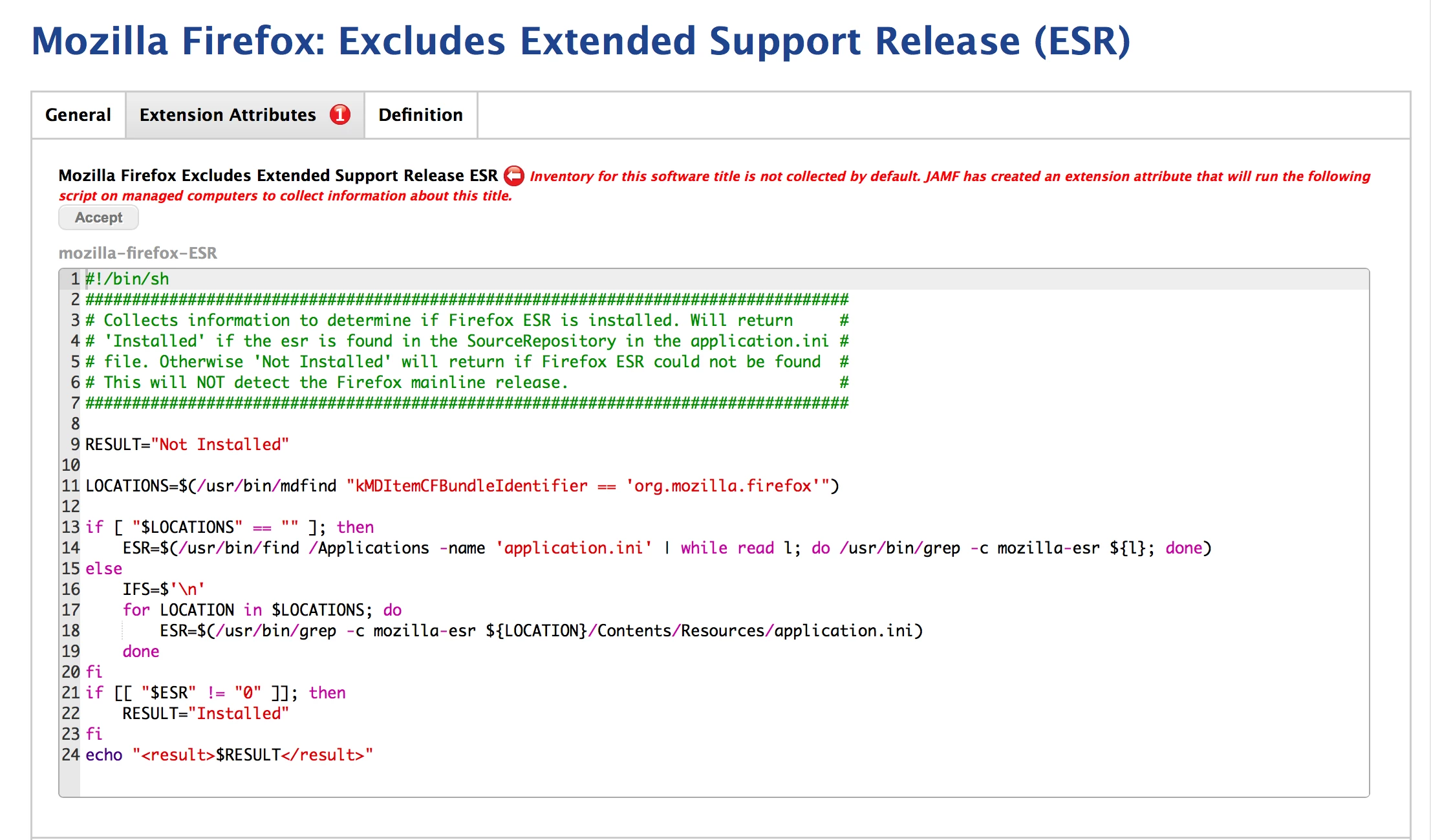I've begun looking at the patch reporting included with Casper 9.9.3 and I've got some concerns because I'm seeing software update information that is either out of date or inaccurate:
Out of date:
Mozilla Firefox - listed as being 47.0.1
Mozilla Firefox 48.0 was released today on August 2nd.

Firefox ESR - listed as being 47.0.1
Mozilla Firefox 45.3.0 ESR was released today on August 2nd:
https://www.mozilla.org/en-US/firefox/45.3.0/releasenotes/

Inaccuracies:
Firefox ESR description - listed as Mozilla Firefox: Excludes Extended Support Release (ESR)
If I hadn't checked the EA for this Patch Reporting Software Title, I would have thought this meant that it was a confusingly duplicate listing for Mozilla Firefox's regular release. When I checked the included EA though, the script comments in the EA indicated it was looking for the ESR version.

Java SE Development Kit 8 - listed as being 1.8.102
Java SE Runtime Environment JRE 8 - listed as being 1.8.102

Oracle has been releasing two separate versions of Java 8 simultaneously, one of which is the CPU release and the other is the PSU release.The difference between CPU and PSU releases is as follows:
Critical Patch Update (CPU): contains both fixes to security vulnerabilities and critical bug fixes.
Patch Set Update (PSU): contains all the fixes in the corresponding CPU, plus additional fixes to non-critical problems.
As of August 2nd, 2016, these are the two released versions:
CPU: 1.8.101
PSU: 1.8.102
Why this is important is that Oracle recommends most folks update to the CPU release and only install the PSU release if they are specifically impacted by one of the bugs in the PSU version's release notes.
For more details on the differences between CPU and PSU updates, please see the link below:
http://www.oracle.com/technetwork/java/javase/cpu-psu-explained-2331472.html





